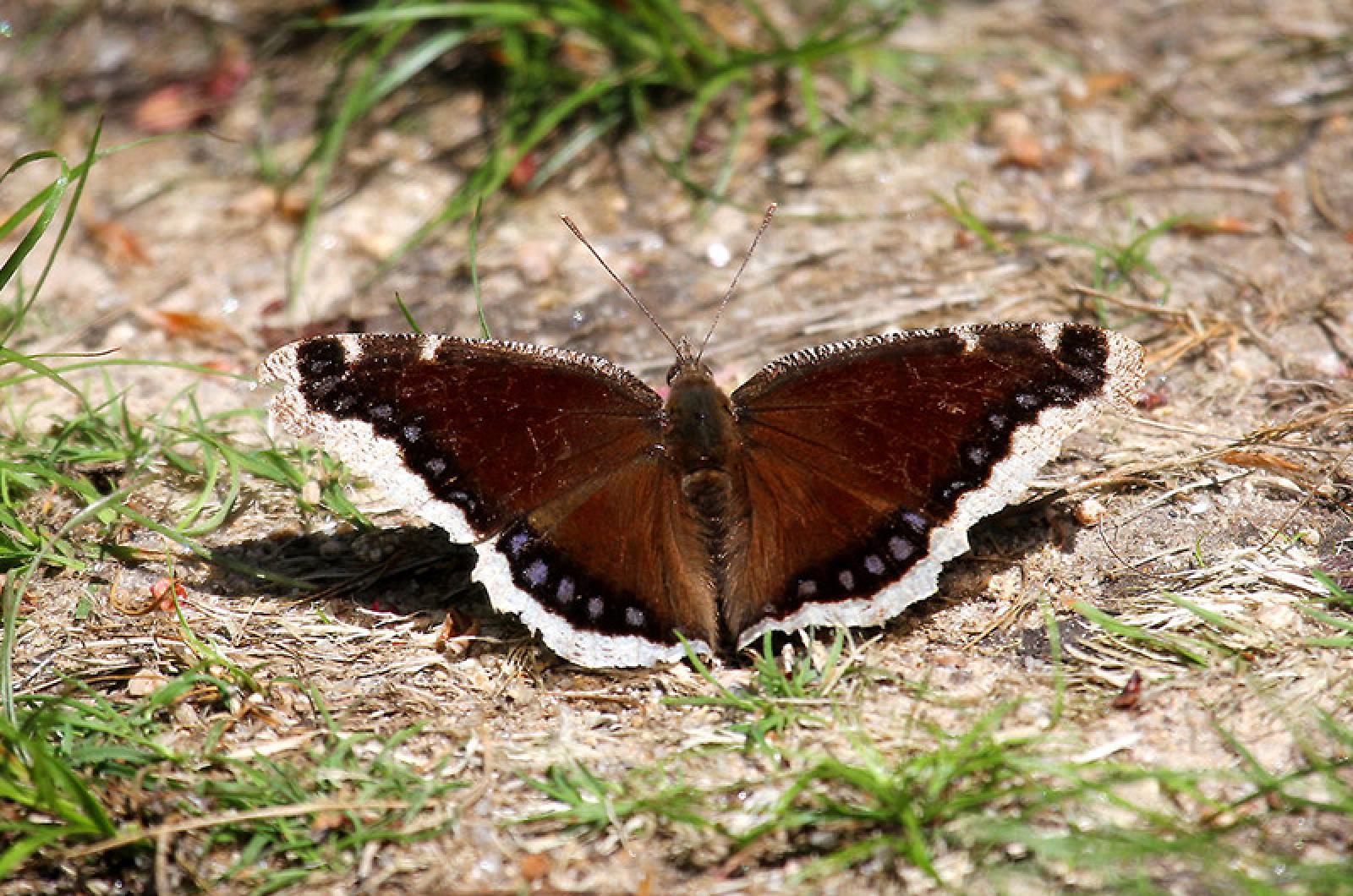Lanny McDowell had a grand surprise last week.
His grand surprise was a butterfly. Grand surprise is the less-known name of the mourning cloak, (also called a white petticoat), a butterfly that recently emerged from its winter hideaway.
While most butterflies spend the winter in one of their other three life cycle stages — egg, pupa, or caterpillar — mourning cloaks overwinter as butterflies. This is rare among butterflies and they are one of only a few species that do so in our area.
Mourning cloaks are usually the first butterflies to emerge in the spring. Lanny saw his on April 11. This butterfly’s emergence coincides with the running of tree sap, which is the adults’ preferred food supply. While most butterflies are known to lap flower nectar, mourning cloaks are sap-suckers, especially enjoying oak tree sap. Alternately, mourning cloaks munch on rotting fruit, dung, and as a last resort, nectar.
The emerging mourning cloaks are not sad, rather they are glad and ready to find a mate, which is the first order of business. After an aerial courtship and mating, the female will lay a group of eggs in a cluster on a single twig.
These eggs and the caterpillars that hatch from them are so numerous that 19th-century American biologist Thaddeus William observed that the larvae were “in such profusion on the willow and elm, that the limbs bent under their weight.” Another account from entomologist Samuel Hubbard Scudder concurred, calling them “so numerous as to become positively injurious.”
After assuring the survival of the next generation, the adult mourning cloaks die and leave their progeny on their own.
While there is danger ahead for these little surprises, the first threat comes from their own. Though we think of caterpillars as plant-consumers, a Penn State University source reports that newly hatched caterpillars can consume the soon to be hatched eggs. Siblicide becomes the caterpillar crime, the result of which is some lost brothers and sisters.
For the surviving caterpillars, there is strength in numbers. When other predators come calling, the mass of black and red spiky caterpillars, called spiny elm caterpillars, will work together to deter any enemies. The spikes, called scoli, may not be scary enough individually, but the caterpillars gang up. En masse, they twitch in unison and shake the branch on which they are feeding to warn off invading insects, birds, or other foes.
After a series of molts, called instars, the survivors will go on their merry way alone to find a place to pupate and form a chrysalis where they will spend just over two weeks before metamorphosing into the familiar brown with yellow-edged butterfly.
The resultant butterfly can estivate, which is the summer equivalent of hibernation, making it a second sleep for this species in its eleven-month lifespan. So if they mourn for their lost parents, brothers, and sisters, they can rejoice in their finely tuned life cycle, which enables them to avoid the harshest weather of winter and summer, and focus on eternal spring.
Suzan Bellincampi is director of the Felix Neck Wildlife Sanctuary in Edgartown, and author of Martha’s Vineyard: A Field Guide to Island Nature.







Comments
Comment policy »